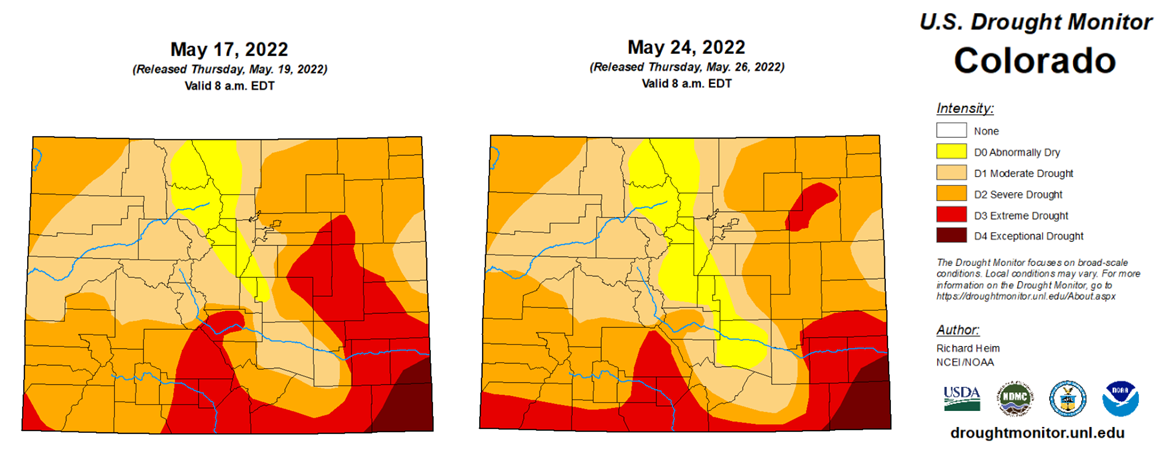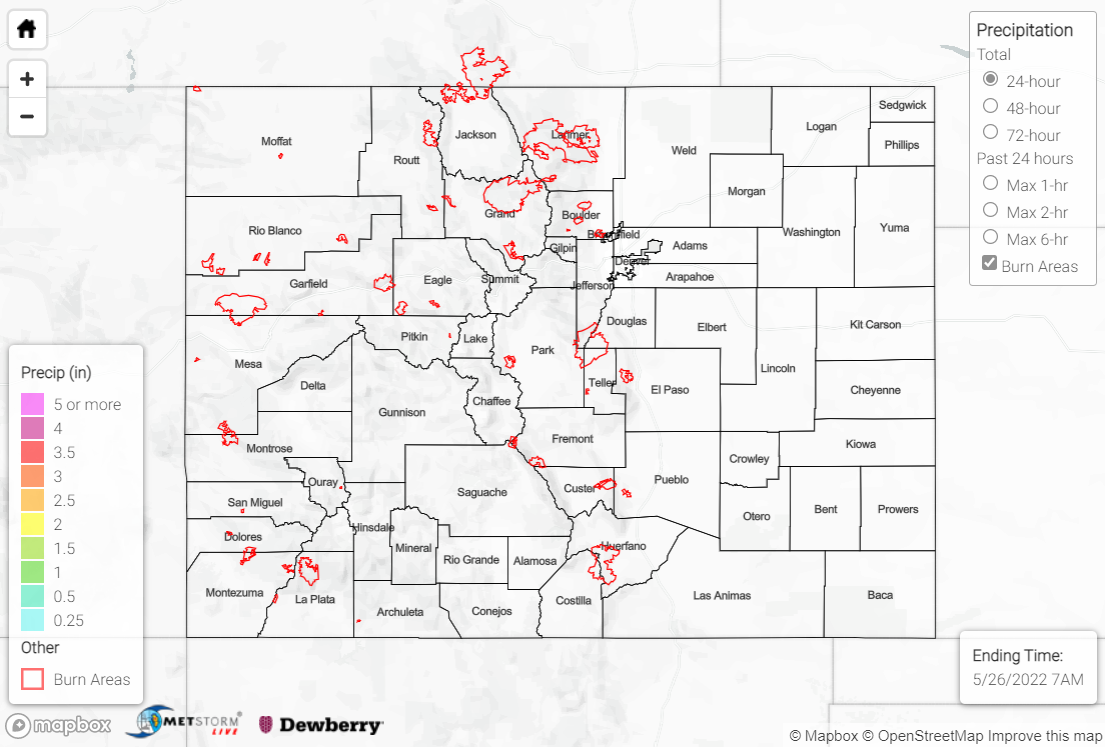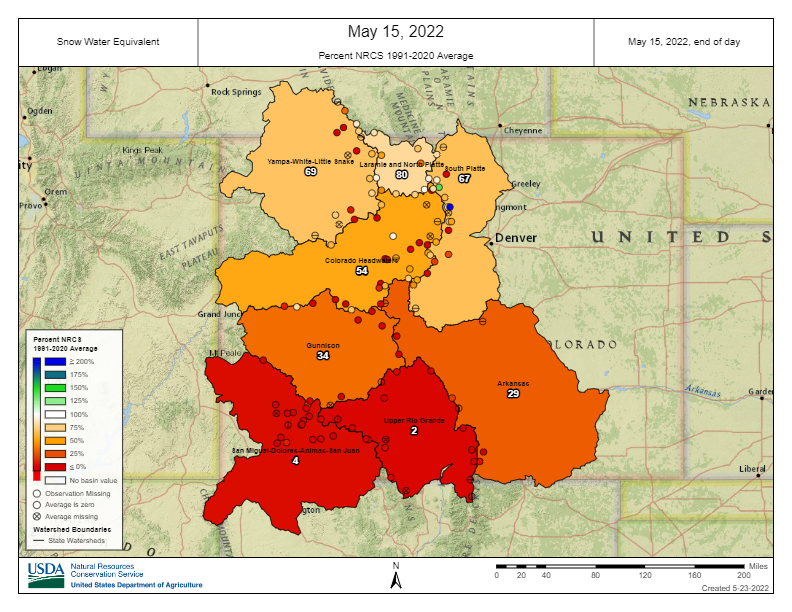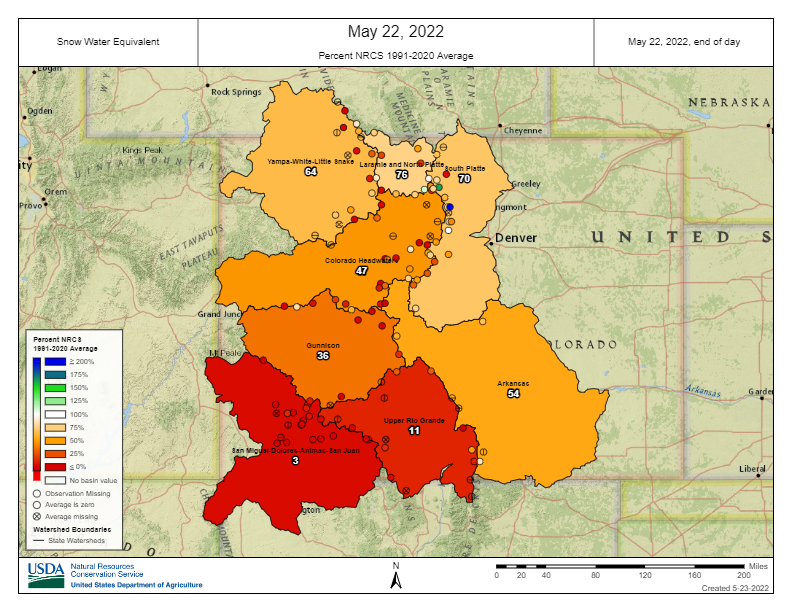Issue Date: Thursday, May 26th, 2022
Issue Time: 10:00 AM MDT
Summary:
After nearly a week of cold and soggy conditions, sunshine returned across the state on Wednesday, while temperatures began to rebound back towards seasonal values. Nearly the entire state was precipitation-free yesterday, save for a handful of stations that reported a trace to a few hundredths of an inch of precipitation.
The U.S. Drought Monitor was updated this morning, with notable improvements in drought conditions across portions of eastern Colorado. The Palmer Ridge saw a reduction in extreme drought, while portions of Park, Teller, Fremont, El Paso, and Pueblo counties went from moderate drought back to abnormally dry.
In terms of statewide percentages, moderate drought went from 93.5% coverage down to 89.7%, severe drought went from 63.9% coverage down to 59.6%, and extreme drought went from 23% coverage down to 18.1%. While we still have a very long way to go, any precipitation helps, and the rain and snow this past week was certainly welcome.
Several creek and river flows across the state, most notably the Arkansas River at Las Animas, remain above normal, but none are in flood stage.
There was no flooding reported yesterday. For precipitation estimates in your area over the last few days, check out the map below.







